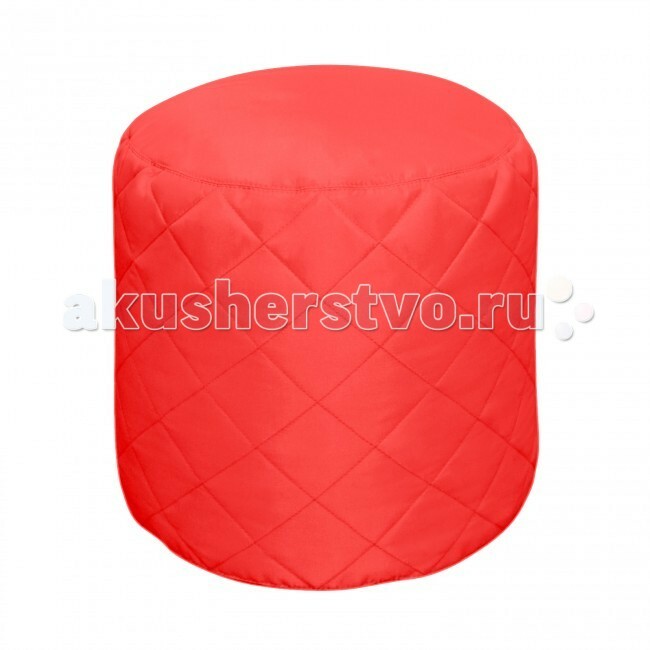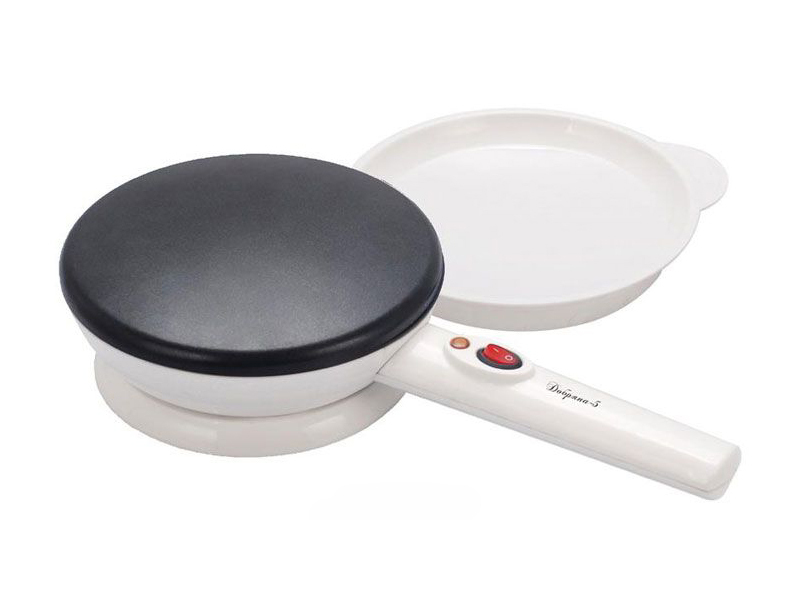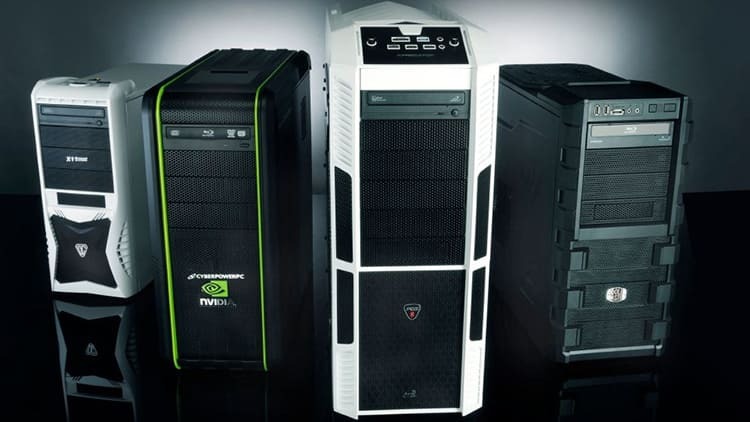
CONTENT
- 1 Types of cases for a personal computer
- 2 What to look for when choosing a PC case
- 3 The best PC case makers for 2018-2019
- 4 How to make a PC case yourself? Manufacturing secrets
- 5 As a conclusion
Types of cases for a personal computer
First of all, it is worth talking about the fact that there are several form factors of a technological "shell". They have only a few significant differences, while having an abundance of common features.
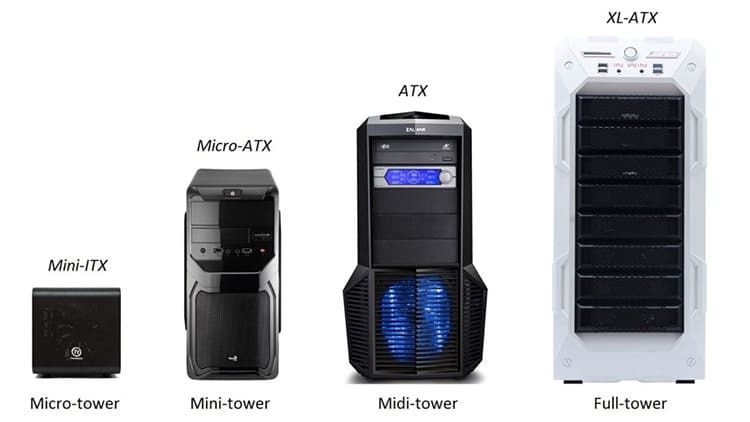
By location on the surface
The most common is the division of PC cases according to their position in space. Today there are the following types:
Horizontal (Desktop) - did not receive wide distribution in Russia due to the specific appearance and not so wide choice in the electronics market. The main advantage is compactness and the ability to place the system unit directly on the table without unnecessary problems.
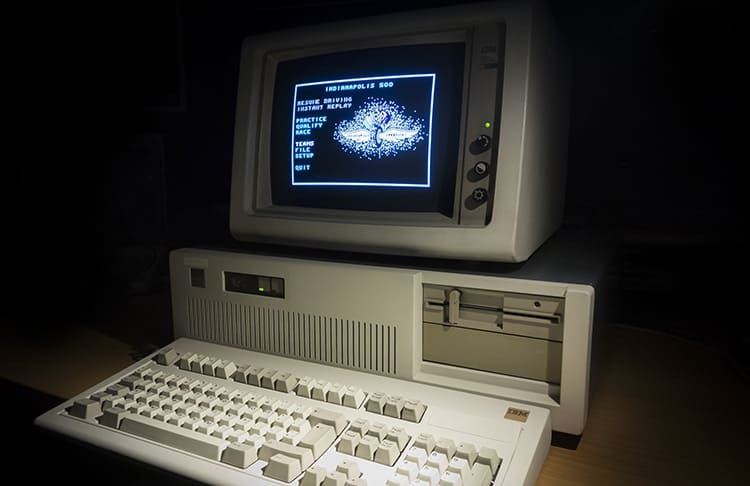
The most compact representatives of the class are considered models Slim Line and UltraSlim Line. They can even be placed in utility rooms with minimal space for action.
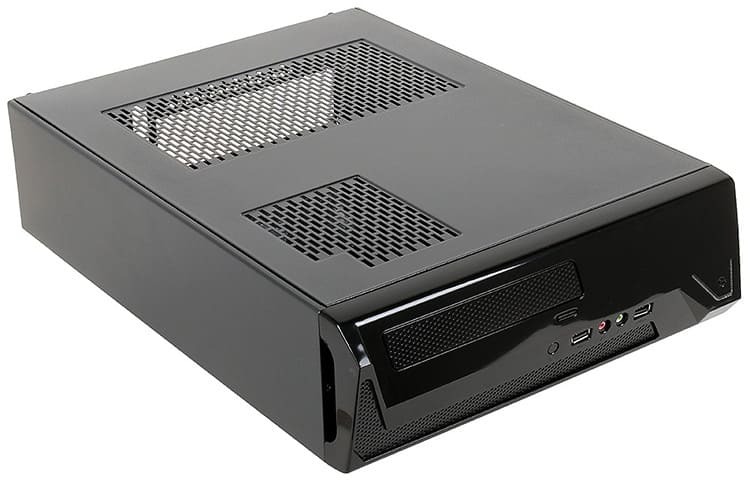
Foot Print and Desktop are a classic solution, allowing you to choose several upgrades to improve the performance of the equipment. But still, the space provided is not enough to build a powerful system for games and 3D modeling.
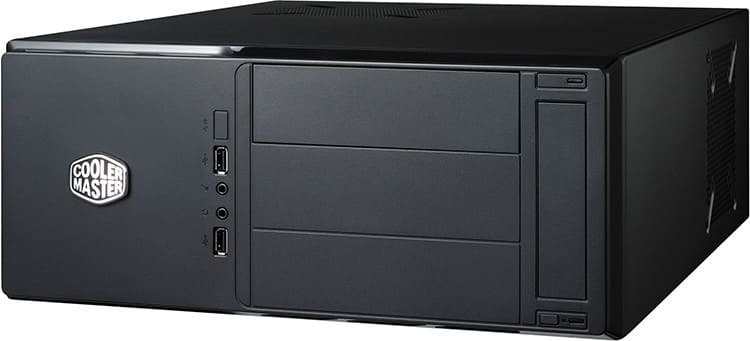
| Modification | Dimensions, mm |
| UltraSlim Line | 381×352×75 |
| Slim Line | 406×406×101 |
| Foot Print | 408×406×152 |
| Desktop | 533×419×152 |
Vertical (Tower) - at least 80% of modern PCs have a similar design. Some models are no less compact than the horizontal version. But in most cases it is a large PC element with wide functionality available for various improvements.
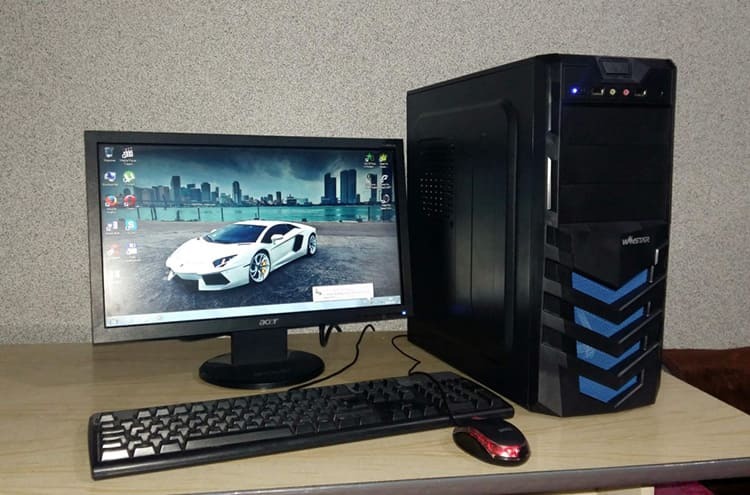
If you live in a small apartment or do not plan to invest in the development of your electronic assistant, then you should choose such a case type as Mini Tower or Midi Tower. They allow you to accommodate everything you need, but the user is unlikely to be able to assemble a super-efficient "unit" with a first-class "filling" of the premium segment.
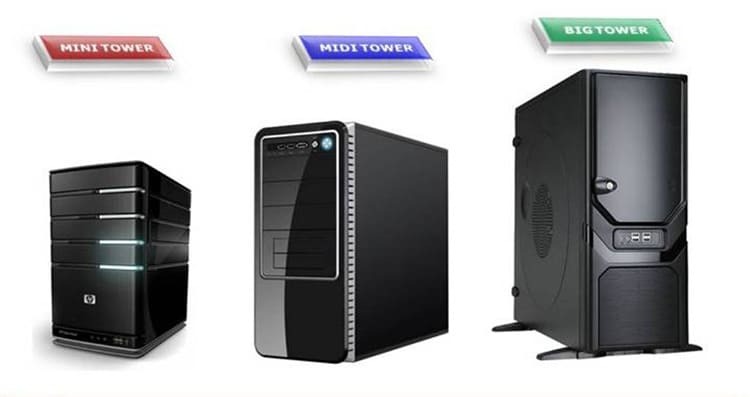
From Big tower higher performance can be demanded as it has a solid length while maintaining a moderate width and height for placement both on the floor and on the table.
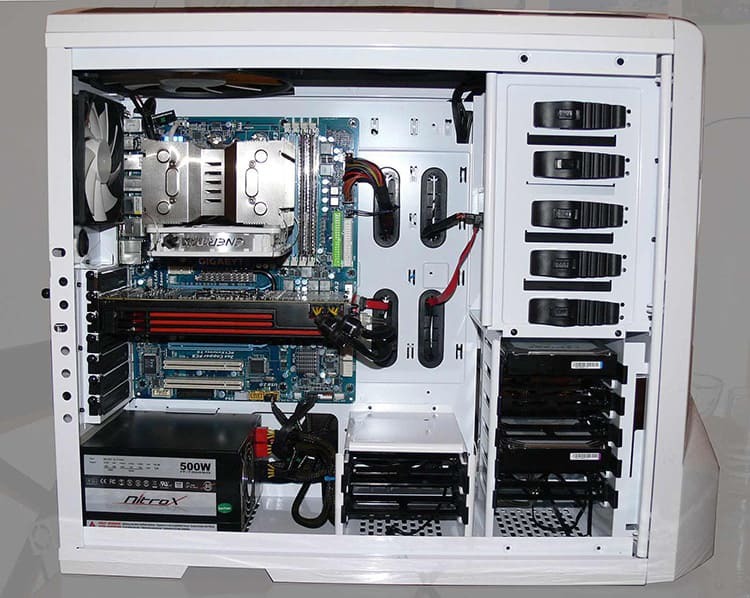
Frame Full tower is a dream come true for any gamer or hi-tech enthusiast, as it can fit at least two standard system units. But for such a "monster" you will need to allocate a lot of free space, and the resulting assembly will consume colossal amounts of electricity.
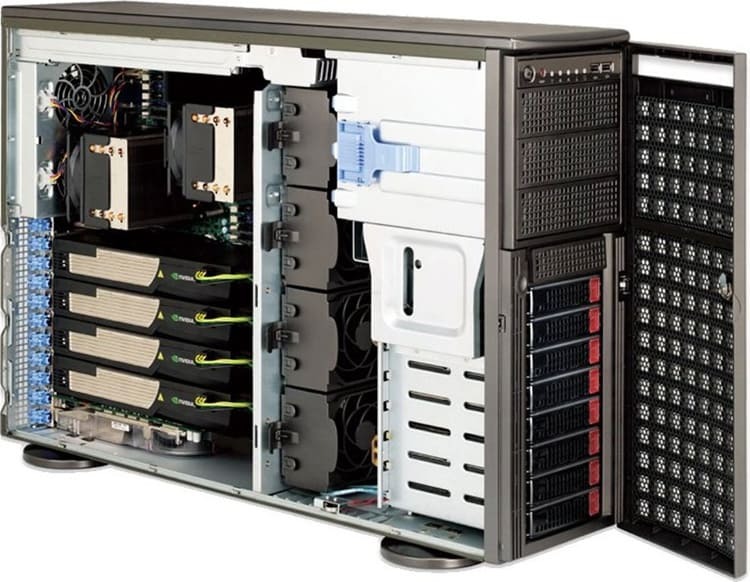
| Modification | Dimensions, mm |
| Mini | 432×432×178 |
| Midi | 432×490×183 |
| Big | 482×820×190 |
| Full | 600 × 1000 × 200 (maximum value) |
TOINFORMATION!
There are also models named "Micro Tower". They are so portable that owners use them mainly as "on-site" options - ideal for PC repair and tune-up technicians. You can also leave such a unit as a backup in case of a breakdown of the operating equipment.
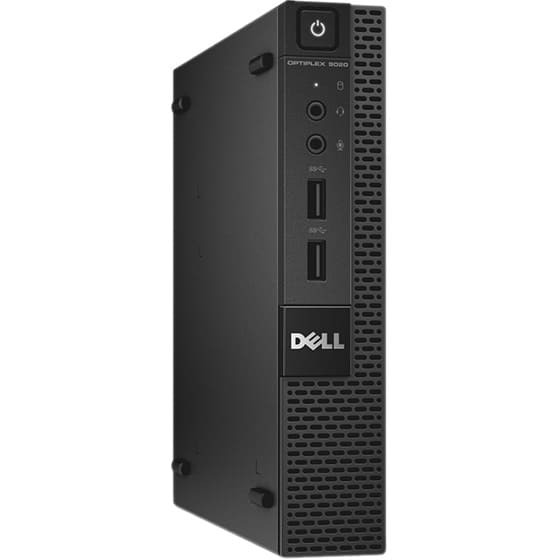
By motherboard form factor
Another very common criterion for classification is the division according to the size of the PC motherboard. With this distinction, the following main types can be distinguished:
ITX (Mini-ITX) - the smallest representatives in the class. Such a "box" barely fits a miniature element with dimensions of 170 × 170 mm, so you don't even need to think about modern games and films in 4K format.
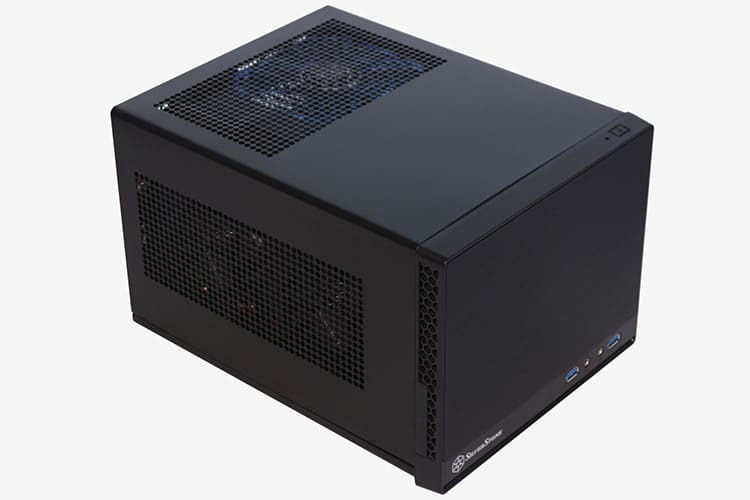
ATX (mini-ATX, micro-ATX) - a traditional and affordable option, presented in all specialized stores. At least 90% of all solutions present today are produced in this format. Allows you to build both a small average PC for household needs and a completely productive multimedia platform.
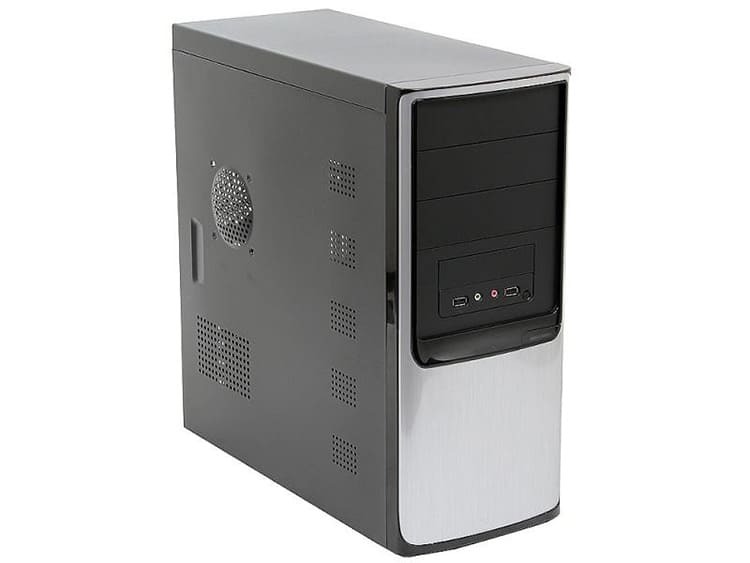
EATX (XL-ATX) - this modification of the PC case exists especially for advanced users-maximalists who are not ready to be content with little. Such expansive designs are chosen to create either server stations or gaming computers with incredible performance.
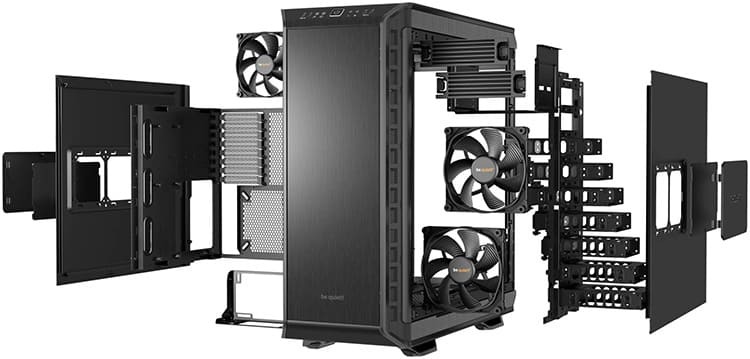
What to look for when choosing a PC case
At first glance, it seems that there are no “pitfalls” when choosing the hero of our review, because what could be simpler than a steel or plastic box with technological holes? "Oh no!" - we will tell you. We propose to consider the most important criteria on which to concentrate if you want to choose the best piece of equipment.
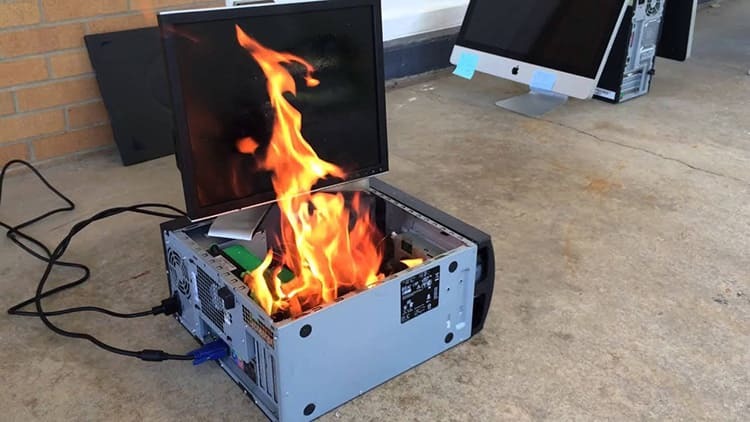
Chassis dimensions and overall system performance
These two parameters are actually related. The more power requirements your PC has, the more spacious you need to choose. But if you only need an electronic assistant for web surfing, working with documents and similar work, a large item will only be a waste of money. In such situations, it is better to prefer the Slim Line or Midi Tower - the "golden mean" of any budget assembly. We have already talked about the dimensions of the products in the previous section - be guided by the data provided by us for a more accurate selection.
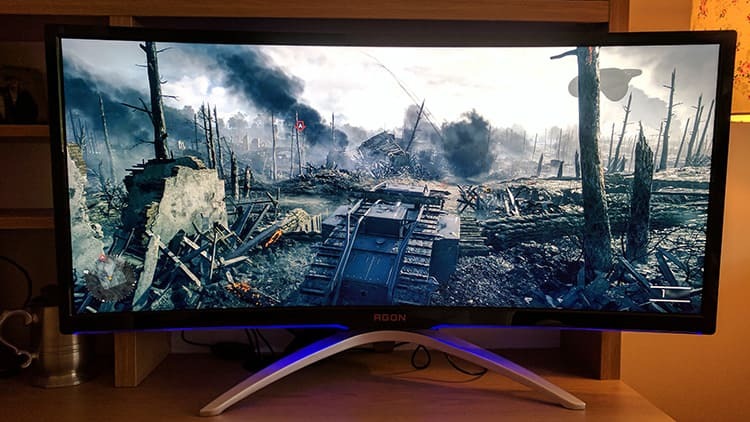
IT'S IMPORTANT TO KNOW!
Of particular importance is the size of the video card used. The fact is that modern powerful motherboards occupy an impressive area inside the case in all three directions. Therefore, a too compact "box" will not allow you to accommodate such a "monster", leaving you in the company of the built-in video module.
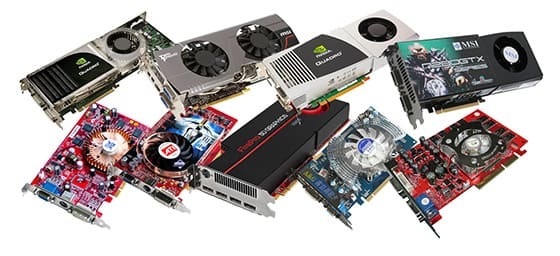
The presence and location of the power supply
Providing sufficient power to all system components is also an important part of reliable equipment. Responsible for this item is the power supply - a special "box" connected to the main components of the PC. Our readers should pay attention to the fact that there are models with a built-in power supply or without it. The former are chosen by supporters of office solutions or equipment for everyday needs, and the latter are chosen for assembling devices for avid gamers, 3D designers and designers.
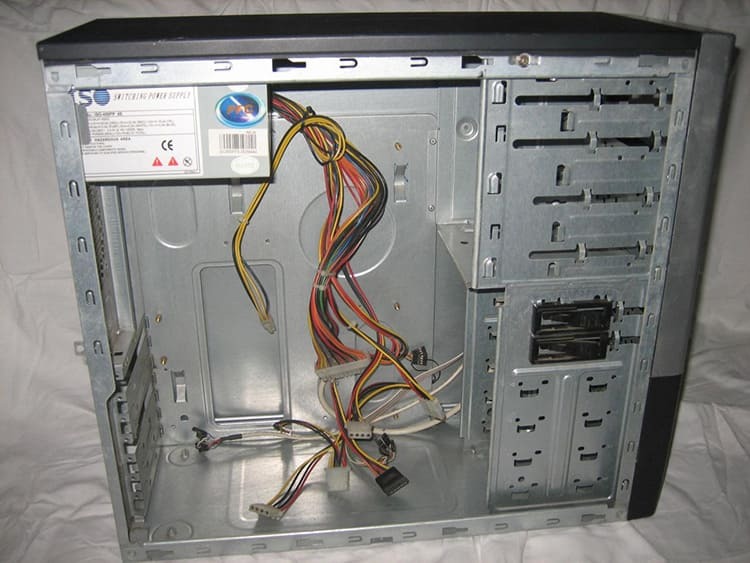
The energy-supplying part is located mainly in the back of the case (if you do not take into account the exclusive versions). The element is fixed to the top or bottom of the system unit. And although most manufacturers prefer the former, the latter is considered more efficient and durable.
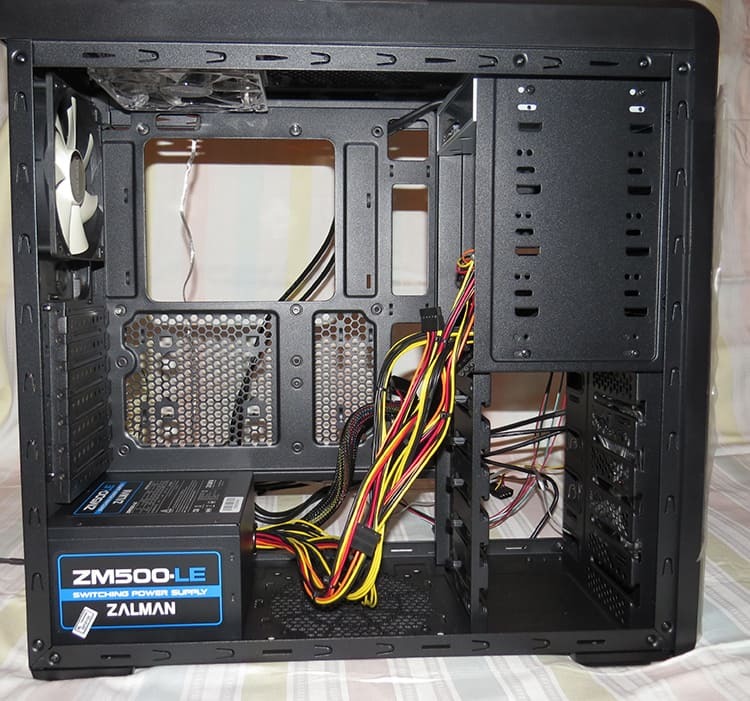
Cooling system
Another "insidious" criterion is related to the cooling of the motherboard and the components located on it. As you understand, electric current creates high temperatures, which in the absence of proper ventilation leads to overheating of parts and failure of the entire device. It is for this reason that it is important to make sure that there are technological holes for the removal of hot air.
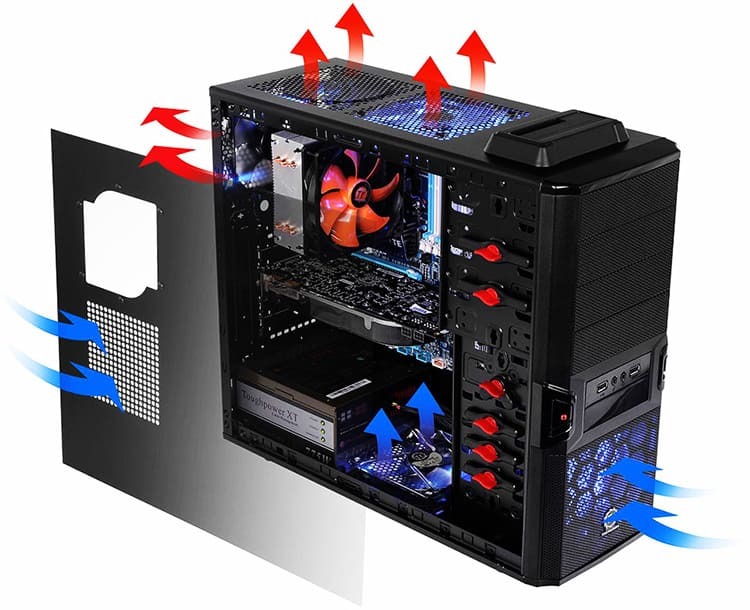
Using a large number of fans on the walls of the product is not ideal - they often provide a "disservice" by irrationally mixing air flows and thereby aggravating heat. For a powerful PC, it is better to choose a case with large areas of mesh openings on the front and side walls.
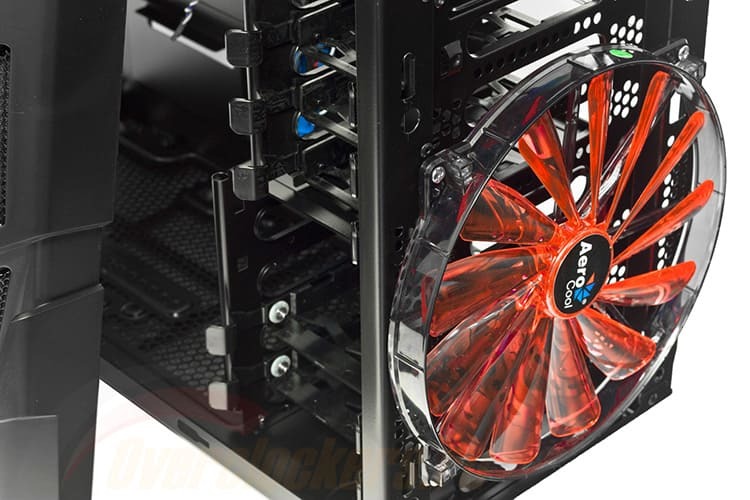
External and internal compartments
On the front side of the case, you can find several rectangular entrances covered with a plastic plug. The top ones (5.25 inches) accommodate optical drives. The optimal amount is considered to be 2-3 pieces, everything above is relevant only for owners of servers or recording studios. The bottom slots (3.5 inches), in turn, serve to accommodate card readers or additional USB connectors. Some craftsmen place in them a scoreboard displaying information about the performance of a computer - but this is rather an exception.
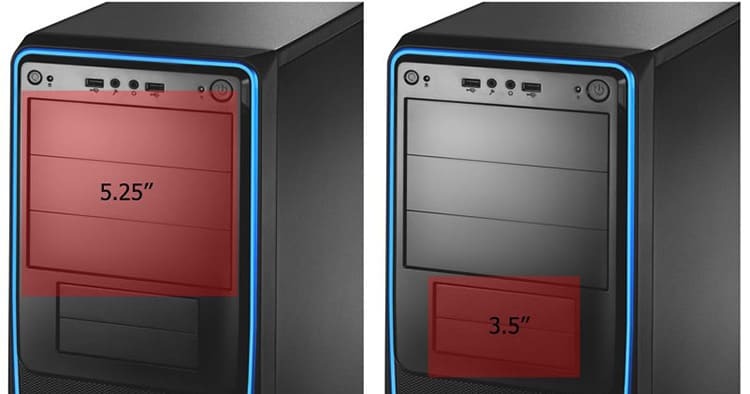
Inside the frame "shell", the owner can find from four to six 3.5-inch bays for installing hard drives. In theory, the more there are, the better, because modern users store a fair amount of gigabytes and terabytes of data in memory, and in general this increases the security of information.
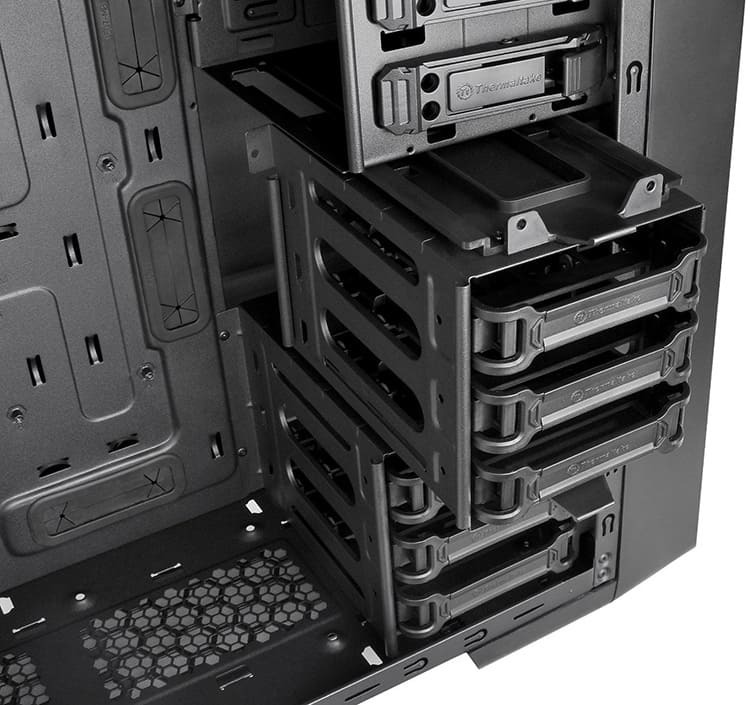
In connection with the development of SSD technology, you can find models with 2.5-inch slots, but in 2019 this is still which is a rarity, most often you have to place the hard drive on the bottom wall or buy a separate fastening.
Rear expansion slots
On the back of the case, you can also see several slots, originally covered with a steel cover. They serve to bring out the interface outputs. video and audio cards, TV tuners and other "extensions". Typically, their number depends on the number of option slots on the motherboard.
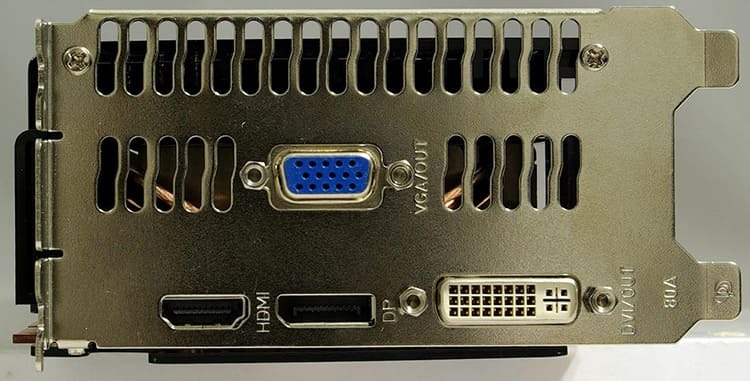
Front panel connectors
Accessing the USB outputs or audio jacks located on the back of the case is not very convenient. Especially for this, there are several USB ports and headphone and microphone jacks on the front. The presence of other inputs-outputs is not regulated - it all depends on the specific modification of each manufacturer.
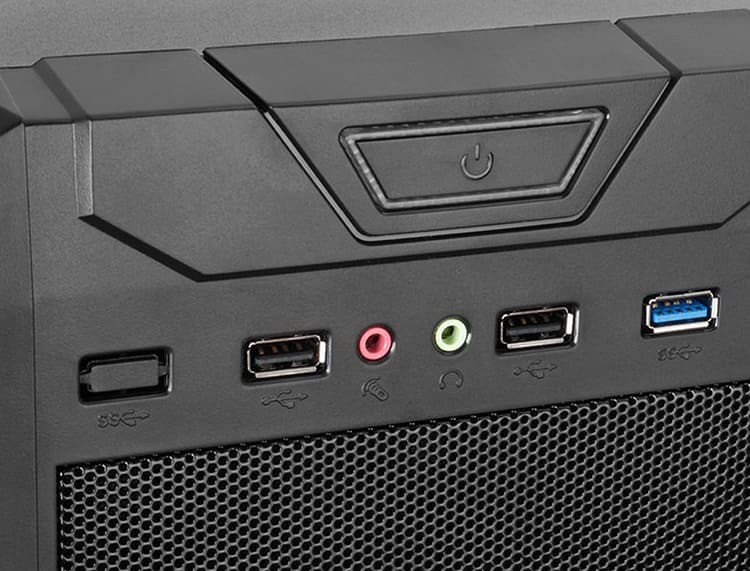
Materials used and appearance
Since, in addition to the connecting functions, the body is also assigned the role of a protector, you should not discount such a criterion as the materials used in the manufacture of the product. The base for the frame is usually ordinary metal, less than 1 mm thick. Sometimes there are modifications made of plastic, and premium products have a "skin" made of glass or expensive alloys (aluminum, titanium). The front panel is made of plastic in 95% of cases - exceptions are rare, and the cost of such equipment will not be affordable for everyone.
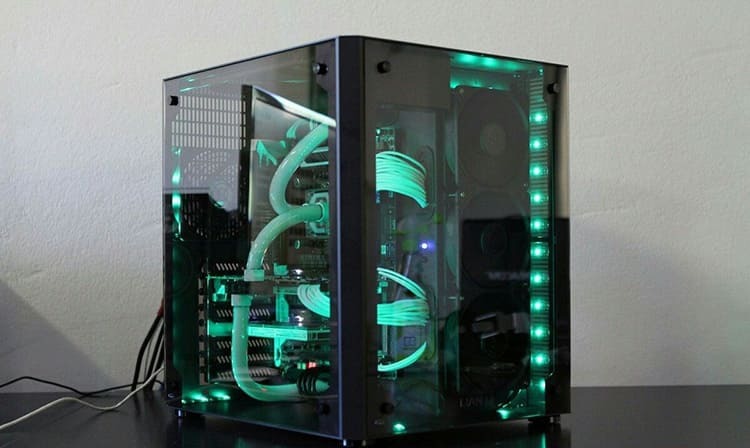
Design delights allow manufacturers to create cases that are unique in their beauty. They are very popular with gamers and owners of luxury houses and apartments. But if your requests are minimal, do not overpay for "bells and whistles" unclaimed in the future.
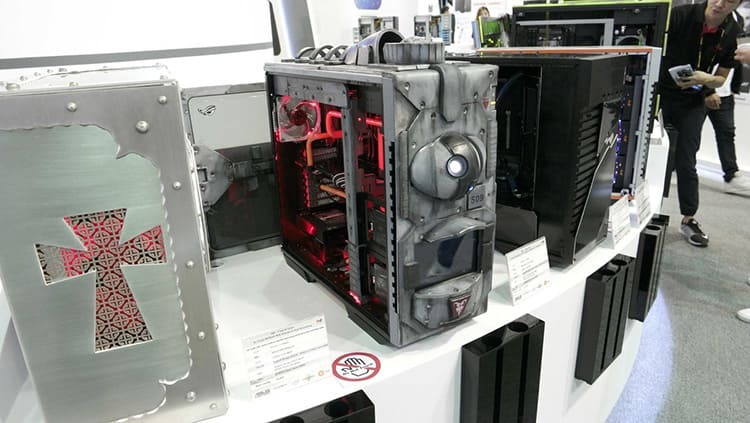
Additional functions
Some companies, when producing individual pieces of equipment, offer customers certain "Extensions" that only insignificantly affect the overall functionality - their meaning is more of an applied character. For example, filters for collecting dust, backlighting of the "insides" of the PC and hundreds of other "gadgets".
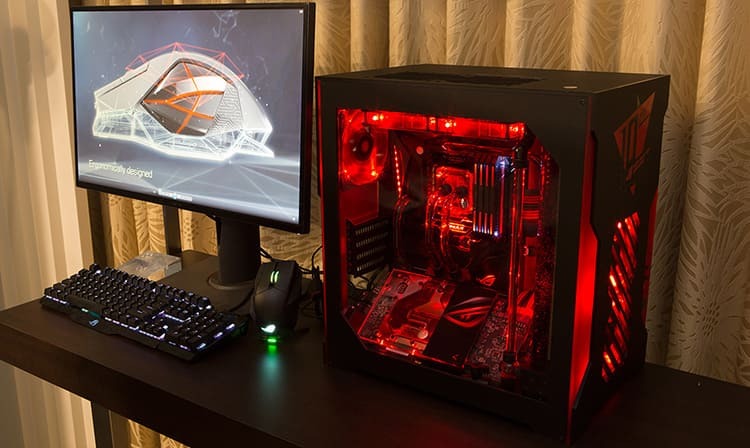
The best PC case makers for 2018-2019
Having dealt with the intricacies of the choice of equipment, you need to decide on a company whose products should be preferred to others. We invite you to familiarize yourself with high-quality and proven manufacturers, whose products are better to choose in 2019.
| Name | An interesting representative of the lineup | Cost (as of February 2019), RUB |
| Deepcool | 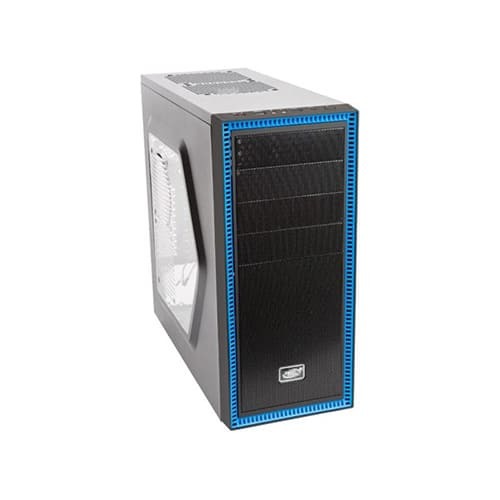 | 2885 |
| Zalman | 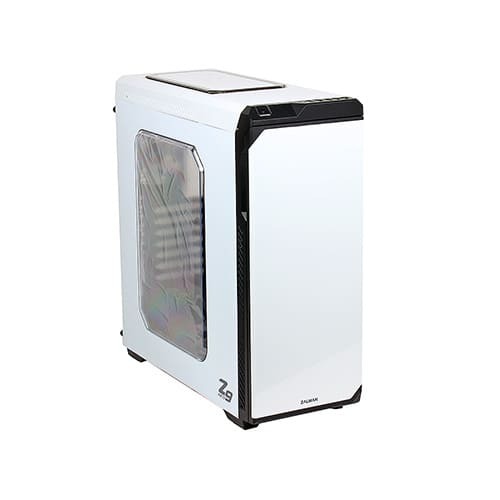 | 3920 |
| AeroCool | 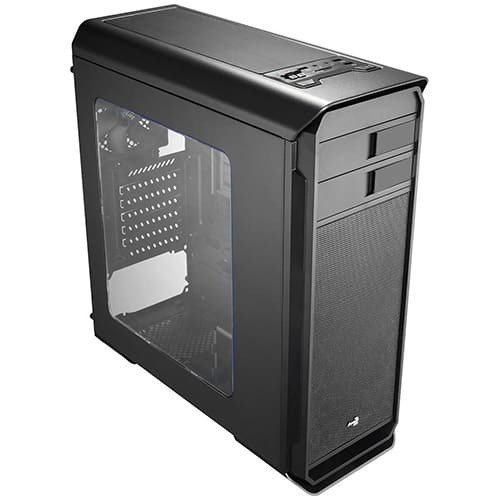 | 2750 |
| Corsair | 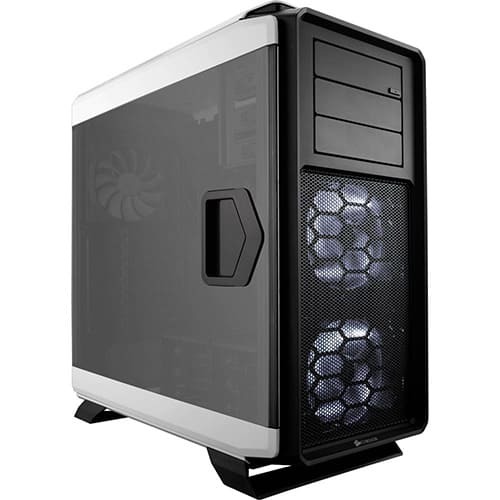 | 13078 |
| IN WIN | 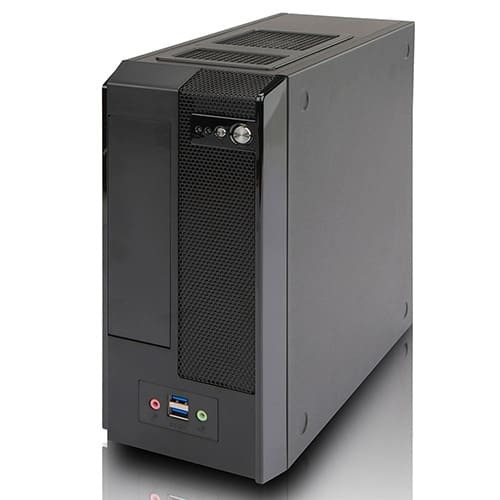 | 3535 |
| Thermaltake |  | 7060 |
| Fractal Design | 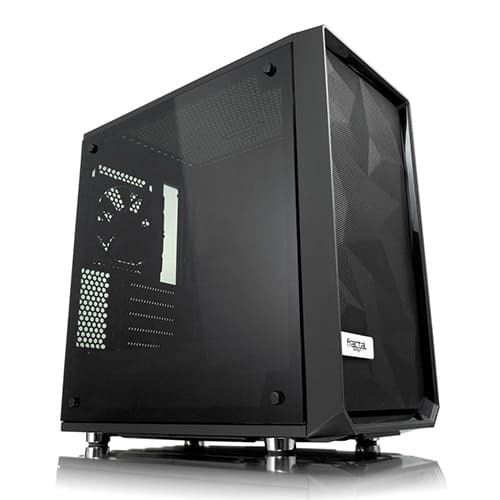 | 6675 |
| Cooler master | 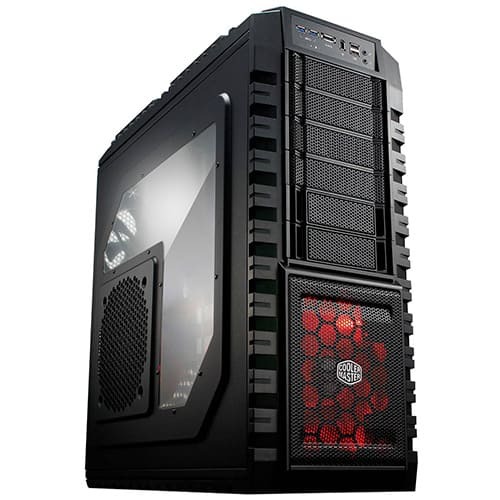 | 11410 |
How to make a PC case yourself? Manufacturing secrets
There are situations when people do not have enough money to buy the device they are interested in. However, if you have the skills to work with various materials, and you have unnecessary things at home, you can try to make the case yourself, using a pinch of skill and a bit of effort.
For manufacturing, you will need pieces of wood, plywood, metal or plexiglass. Taking as a sample the dimensions and appearance of the type of equipment you are interested in, you will have to cut out the blanks yourself, using the tools at hand.
The further process requires a lot of attention and perseverance, so our editors suggest looking at what is happening in video mode, especially since this way the material will be perceived much better:
Please note that you still have to buy or remove electronic parts (ports and inputs, fans) from outdated PCs.
As a conclusion
So our next journey into the world of high technologies has come to an end. Having learned all the necessary information, having analyzed the possibilities of cases from well-known manufacturers and the prospects for an independent manufacture, the editors of Tehno.guru came to the following conclusion: buying products from a reputable company will always be a cut above home crafts. You can accurately match all dimensions, but there are a number of nuances that only professional manufacturers or robotic operations can get around. But if the spirit of Kulibin lives in you and the desire to develop new skills in yourself, you can try to conduct an experiment. And this is where we conclude our story and wish you a good choice and a worthy purchase!

